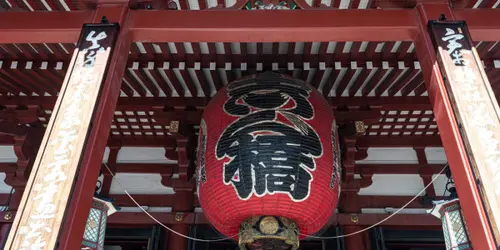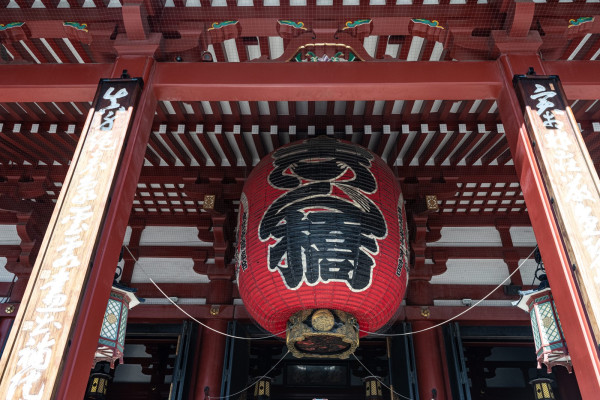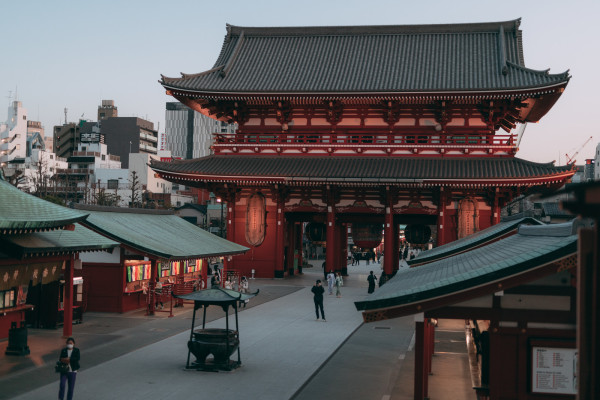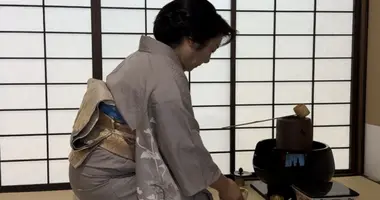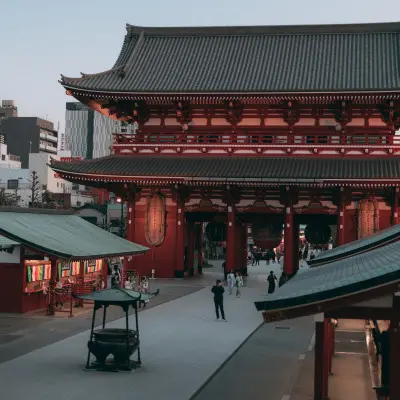
Asakusa ©️ Sushipaku / Pakutaso
Asakusa History Walk
- Taito City
- English
- 2 hours
Discover Tokyo's cultural center by setting out on an enthralling two-hour walking tour of Asakusa with a local guide.
Asakusa, where it all began
Tokyo's Asakusa neighborhood has a long and illustrious past that dates back many centuries.
Senso-ji Temple, the focal point of the area, is the oldest temple in Tokyo, having been established in 628 AD. Destroyed during World War II, the temple was meticulously reconstructed, symbolizing resilience. The Edo period (1603–1868) saw Asakusa flourish as a district for entertainment, drawing artists and housing kabuki theaters.
Asakusa continues to attract tourists who want to travel back in time and discover Tokyo's rich cultural legacy despite modernization. This immersive tour will give you a glimpse into Tokyo's soul as it leads you through bustling markets, serene temples, and historic sites. Your knowledgeable guide will accompany you throughout.
All of Asakusa's landmarks, including the first movie theater in Japan and the imposing Thunder Gate (Kaminarimon) and red lanterns that lead to the main hall, tell the story of Tokyo's past.
A 2-hours walk through history
Our journey begins at the well-known Asakusa Culture and Tourist Information Center, a stunning example of contemporary architecture with expansive views. Admire the stunning view of the Asakusa neighborhood's history and the Tokyo Skytree, and start following the guide!
Asakusa, Tokyo's oldest and liveliest neighborhood, is brimming with famous landmarks and undiscovered treasures that you would never find without a knowledgeable guide.
Nakamise, for delicious snacks
Another street with a centuries-long history is Nakamise Shopping Street. Being one of Tokyo's oldest shopping streets, its origins can be traced back to the Edo period. The street's name, "Nakamise," roughly translates to "inside the gate," reflecting its location leading up to Senso-ji Temple.
When Nakamise was first founded in the early 1700s, it catered to pilgrims who were visiting Senso-ji by offering a route for them to buy religious items, mementos, and regional crafts. Over time, the street changed to accommodate the varying needs and tastes of locals and tourists.
Nakamise Street has undergone numerous changes over the course of its existence. It endured the destruction of World War II, saw the thriving Edo period cultural scene, and underwent reconstruction in the years following the war. With a variety of traditional goods, snacks, and souvenirs available, Nakamise is still a thriving marketplace today.
While on the tour, peruse booths featuring regional delicacies, handcrafted items, and distinctive mementos. Our guide will point out must-try treats, and you'll have the chance to interact with local artisans.
Senso-ji Temple, Japan's oldest Buddhist temple
With a rich past that dates back to 628 AD, Senso-ji Temple is the oldest Buddhist temple in Japan. According to legend, the temple was founded after two fishermen in the Sumida River found a sacred statuette of Kannon, the goddess of mercy.
This entry is marked by the recognizable Thunder Gate (Kaminarimon), which has a huge red lantern on it. Ancient charm and a sense of reverence are evoked by Senso-ji's five-story pagoda and its impressive Kannondo main hall.
The temple, which was destroyed during World War II and painstakingly rebuilt, represents resiliency. Senso-ji is now a symbol of Tokyo's rich cultural legacy, a place of spiritual retreat, and a historical site.
Sumida river, the lifeline of Tokyo
The Sumida River flows through a variety of neighborhoods, providing transportation and business with a vital link. The riverbanks host cherry blossoms in spring, creating picturesque scenes.
Famous bridges that line the Sumida River, like the Komagata and Azuma bridges, add to Tokyo's skyline. Along its shores are the Tokyo Skytree and Sumida Aquarium, which combine contemporary architecture with the area's historic charm.
Tokyo Skytree
Japan's tallest building, Tokyo Skytree, rises 634 meters to guard Asakusa from above. It is a marvel of architecture. When it was finished in 2012, Tokyo's skyline featured this iconic landmark in addition to being a broadcasting tower. Its futuristic style reflects Japan's rich cultural legacy by incorporating traditional elements. Illuminated at night, Tokyo Skytree stands as a symbol of modernity and innovation in the heart of the bustling city.
Other hidden gems
In order to give you a taste of authentic neighborhood life, our guide will also make the time to visit less well-known, more private parts of Asakusa.
In addition to being a residential and retail district, Asakusa is home to locals, whom your guide will show you around.
Why Choose Our Asakusa Walking Tour:
Insider Tips: Take advantage of our local guide's knowledge as they share cultural quirks, historical tales, and insider information.
Short and condense tour: A brief and concentrated tour that will immerse you in the core of Tokyo's cultural legacy, including both modern architectural wonders and ancient temples.
Small group tour: this tour will allow you to meet other travelers and like-minded individuals who are eager to learn about Tokyo's rich cultural diversity.
Timing and itinerary details are subject to change in response to unforeseen events, weather, and group dynamics. It is recommended that participants dress according to the weather and wear comfortable walking shoes.
Start your exploration of Tokyo's diverse cultural landscape with a two-hour walking tour of Asakusa, an area where historical customs coexist peacefully with contemporary living.
